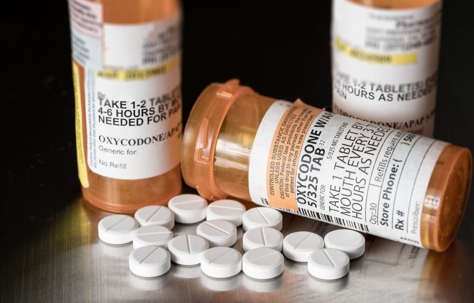Understanding Prescription Drug Abuse
In the United States, the popularity of prescription drugs has been growing. While prescriptions are helpful and even lifesaving for many, some drugs also have a high potential for abuse and addiction. The majority of commonly abused drugs fall into the classes of stimulants, depressants, and opioids. But first, it might be helpful to learn, what exactly a prescription drug is.
What Is a Prescription?
A prescription is an order from your doctor that allows you access to certain drugs. These drugs are called ‘controlled substances’ because they are regulated by both the U.S. Food and Drug Administration (FDA) and the Drug Enforcement Agency (DEA). Some controlled substances are illegal for everyone, and others you can get with a prescription. Medications in the latter category are called prescription drugs. These drugs are categorized based on their effect on patients. The most popular – and those with some of the highest potential for abuse – are called stimulants, depressants, and opioids.
Stimulants
Stimulants are designed to keep you focused and alert. Many people take them to treat Attention Deficit Hyperactivity Disorder (ADHD), narcolepsy, and other psychological and neurological disorders. Adderall and Ritalin are common prescription stimulants. Some people misuse these medications as “study drugs” or to seek artificial feelings of pleasure and happiness.
Depressants
Also called sedatives and tranquilizers, depressants have an opposite effect to that of stimulants. These drugs are designed to calm down unusual brain activity, and they work by inhibiting the function of the central nervous system. Benzodiazepines, such as Xanax and Valium, help people with anxiety and panic disorders and help inhibit seizures, and sleep medications, like Ambien and Lunesta, help people with insomnia. Sometimes, doctors prescribe barbiturates to help with severe cases of panic, seizures, and insomnia, but the use of barbiturates has become less common in recent years.
When people abuse depressants, it is usually because they seek the feelings of relaxation, calmness, and pain relief associated with the drugs. Some people also experience ‘rebound symptoms’ after a dose wears off and take more medication than they mean to in an attempt to alleviate anxiety.
Opioids
Opioids are powerful and extremely addictive pain relievers. Doctors typically prescribe opioids, like morphine, OxyContin, codeine, or Vicodin after surgery or severe injuries. Previously, doctors also used opioids to manage chronic pain. Opioids were extremely popular in the late 1990s because manufacturers downplayed their addictive nature. As a result, the United States is suffering an opioid epidemic with extremely high numbers of addictions and overdose. All too often, people that can’t get prescription pills turn to illegal opioids, like heroin and fentanyl.
Addiction and Abuse
Even with perfect prescription use, many of the drugs we’ve discussed above can create physical dependencies and become addictive. These drugs affect the brain’s chemistry and alter the brain and body so they cannot function without the drugs. Addiction causes people to seek and use drugs in a compulsive manner, meaning their drug use is difficult to control, despite harmful consequences.
The potential for addiction is higher when people misuse their drugs, taking them recreationally or outside of the instructions provided in their prescription. Some personal factors, such as genetics and mental health conditions, may also increase an individual’s risk of addiction.
The signs of abuse and addiction can be difficult to spot at first, especially for the person experiencing the disease. People with drug addictions may suffer physical and psychological symptoms, especially when they stop taking the drug. Signs of prescription drug abuse and addiction include:
- Losing interest in activities and responsibilities not related to drugs
- Neglecting personal and professional responsibilities in favor of drug use (or to hide drug use)
- Changing friend circles to avoid judgment or obtain drugs
- Seeing multiple physicians or lying about one’s condition to obtain or extend prescriptions
- Forging prescriptions
- Stealing or otherwise obtaining drugs illegally
- Spending or stealing money one does not have to buy drugs
- Displaying poor judgment and impulse control
- Switching from prescription drugs to illegal drugs (like cocaine or heroin)
Addiction can have an enormous impact on your health and all other aspects of your life. The risk for accidental overdose is always present, and drug use can open you up to a wide variety of dangers. Fortunately, treatment is available, and many people are able to beat their prescription drug addictions.
To get help, please call the Substance Abuse and Mental Health Services Administration’s National Helpline at 1-800-662-HELP (4357).
Doctors or Drug Manufacturers May Be At Fault
If you or a loved one has suffered from drug addiction, negligent prescribers or manufacturers may be at fault. The companies that produce drugs must warn both doctors and patients about any potential for addiction. Opioid manufacturers, like Purdue Pharma and Johnson & Johnson infamously hid these risks for many years, and these companies now face legal consequences.
When doctors understand the risk of addiction, they must be careful with prescribing certain drugs, as well. For example, a doctor should never prescribe opioids to a patient with a history of substance abuse.
If you believe you have been harmed by defective drugs or a medication error, please do not hesitate to contact Gaddis, Herd, Craw & Adams, P.C. We have been helping people get the compensation they deserve for more than 4 decades, and we can help you, too.
Call us at (719) 625-3310 or contact us online to schedule your free consultation and get started today.

